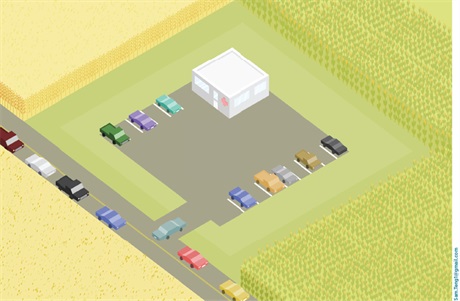Will Flanary, MD, is an ophthalmologist and comedian who regularly posts humorous yet precisely on point medical videos under the handle Dr. Glaucomflecken. In one of his segments, a multitasking emergency/family medicine physician in a rural hospital greets a new medical student.
Rural medicine physician: Welcome to rural medicine. What do you want to do while you’re here?
Medical student: I’m sorry?
Doctor: Deliver a baby, fix a broken leg, admit a patient with sepsis, do a central line, mental health counseling. What do you want to do?
Student: You know how to do all those things?
Doctor: Yeah. The nearest tertiary care hospital is 200 miles away.
Student: What if something comes up that you don’t know how to do?
Doctor: We’re in the middle of nowhere, but we still have internet. (Watch the full video at https://tinyurl.com/7j3m7ef8.)
It’s a scenario that wouldn’t be unfamiliar at many rural hospitals in the United States as a shrinking pool of emergency physicians is called upon to provide care for an increasing number of patients. There were 1368 critical access hospitals in the United States as of April, a federal designation created to preserve access to essential health care services in rural communities. (Rural Health Information Hub. April 25, 2024; https://tinyurl.com/ycxyha6b.) These hospitals have 25 or fewer inpatient beds, are located more than 35 miles from another hospital, maintain an average length of stay of less than 96 hours for acute patients, and provide 24/7 emergency care.
Multiple barriers impede emergency care in these rural emergency departments, including staff shortages, transportation difficulties, poor administrative support, single coverage, lack of resources and specialists, poor access to care, and lack of residency training in rural environments. A 2022 study found a major scarcity of emergency medicine residents and residency training programs in rural areas of the United States, but that’s no surprise with 98 percent of 6993 emergency medicine residents working in urban areas. (Ann Emerg Med. 2022;80[1]:3.)
The authors also found that 92 percent of the nearly 50,000 clinically active emergency physicians in the country practiced in urban areas, with just eight percent (3927) practicing in rural communities, a decline from 10 percent in 2008. The median age for urban emergency physicians is 50, but the median age is 58 in large rural communities and 62 in smaller rural communities.
“The sadness of it is, there are a lot of questions to which we really don’t have good answers,” said study author Christopher Bennett, MD, an assistant professor of emergency medicine at the Stanford University School of Medicine. “Our emergency physician workforce has most certainly grown.”
The number of graduates from emergency medicine residencies increased by more than 60 percent between 2008 and 2020, but that growth has been uneven, he said. “We have deserts in the predominantly rural center of the country. The older emergency physicians who are retiring in those areas are from the generations who used to stay there, while younger emergency physicians are more likely to stay in the urban or suburban areas where they have trained, since that is where most emergency medicine residencies are.”

